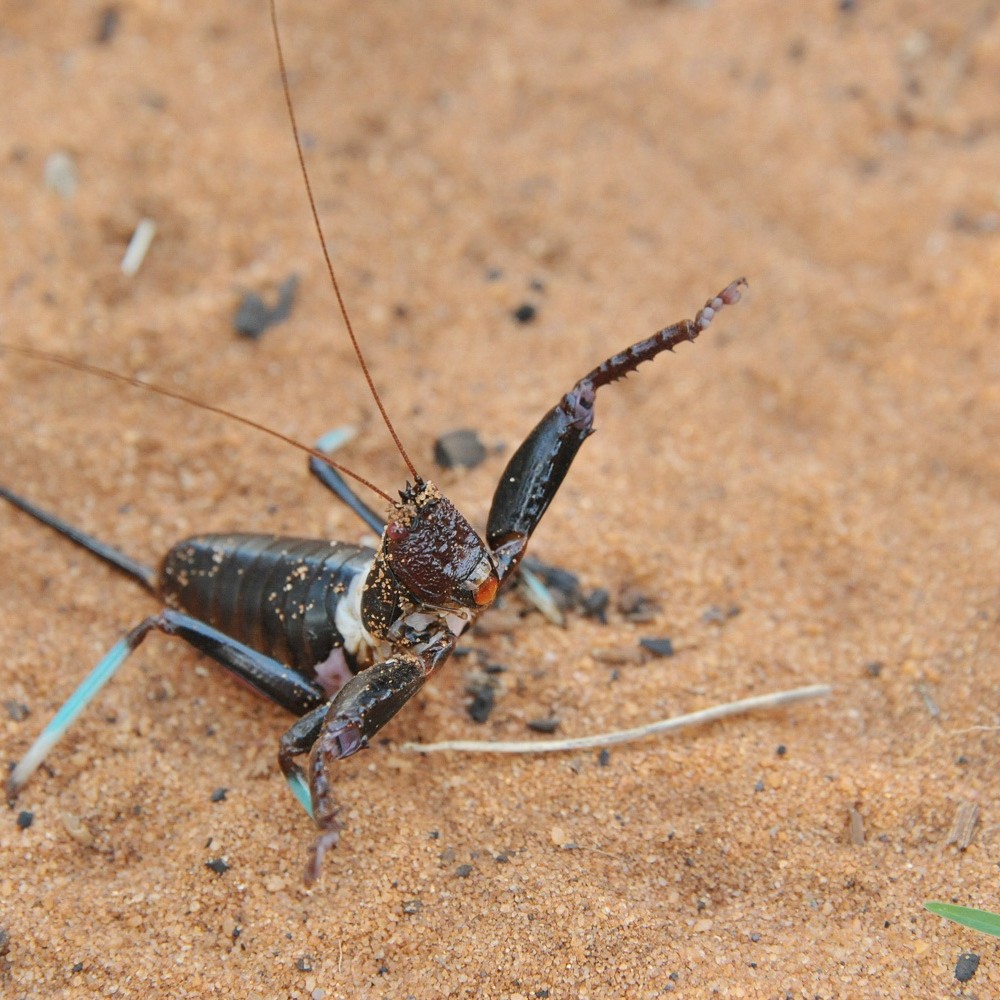Armoured katydid
(Acanthoplus discoidalis)

Description
Acanthoplus discoidalis is a species in the Bradyporinae, a subfamily of the katydid family (Tettigoniidae). Like its closest relatives, Acanthoplus discoidalis variously bears common names such as armoured katydid, armoured ground cricket, armoured bush cricket, corn cricket, setotojane and koringkriek. The species is native to parts of Angola, Namibia, Botswana, Zimbabwe and South Africa. Note that the common names are characteristically misleading; the species is not closely related to true crickets, which are a different family, the Gryllidae. Acanthoplus discoidalis is a wide-bodied, flightless species that typically grows to a body length of about 5 cm/1.95 inches. The pronotum bears several sharp, conical spines. The mandibles, or main biting jaws, are powerful; they can inflict a painful nip and they permit the insect to feed on material such as tough herbage or carrion. Another defense against predators is reflex bleeding (also called "autohaemorrhaging") in which the insects squirt haemolymph from pores in their exoskeleton, achieving a range of a few centimetres. Acanthoplus discoidalis is omnivorous and feeds opportunistically on many different foods. One source documented attacks on red-billed quelea nestlings and suggested that the insects might be able to detect the nests by auditory clues. Especially when their diet is deficient in protein and salt, members of the species commonly become cannibalistic, so much so that when their populations peak in autumn and some of them stray across roads and are crushed by traffic, cannibalistic conspecifics congregate around the casualties and feed until they are killed in turn. During that season their remains may form large patches on roads. In Acanthoplus discoidalis, courtship and mating is a relatively slow process; it starts at sunset and usually is completed by sunrise. First the stridulation of the males attracts females. The male produces a large spermatophore that includes a sperm pouch and an attached spermatophylax, a portion of food that serves as a nuptial gift to the female. Having mated, a male cannot mate again before he has had time to grow a new spermatophore. A female must mate before laying her first clutch of eggs. Thereafter she may mate and lay eggs again in any arbitrary order, as she can store sperm.
Taxonomic tree:







